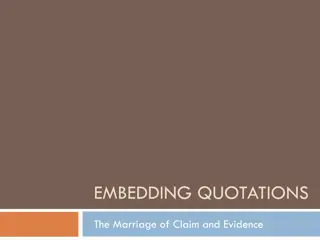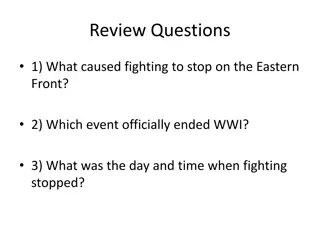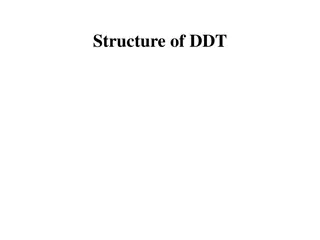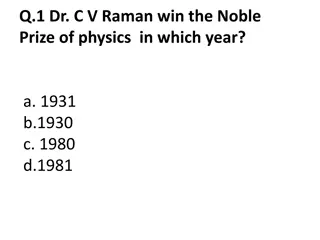Life and Literary Works of Johannes V. Jensen: A Nobel Prize Laureate
Johannes V. Jensen (1873-1950) was a prominent Danish writer known for works such as "Kongens Fald" (The Fall of the King). With a diverse literary portfolio comprising poems, articles, and novels, he received the Nobel Prize in Literature in 1944. Jensen's upbringing, career, and notable works are encapsulated here, shedding light on the life of this celebrated author.
Download Presentation

Please find below an Image/Link to download the presentation.
The content on the website is provided AS IS for your information and personal use only. It may not be sold, licensed, or shared on other websites without obtaining consent from the author. Download presentation by click this link. If you encounter any issues during the download, it is possible that the publisher has removed the file from their server.
E N D
Presentation Transcript
Johannes V. Jensen, 1873-1950 Kongens Fald, 1900-1901 The Fall of the King, transl. 2012 V. = Vilhelm
Life etc. Born in Fars , Died in Copenhagen Fars , West Himmerland
Map of the different areas in Denmark Nordenfjords
Life cont. 10 siblings, second oldest Father interested in science, Atheists Sister Thit Jensen, writer, feminist; conflict Painted as a young man Gymnasiet in Viborg, graduated 1893 Studied medicine, Copenhagen University, 3 years, Dropped out, focused on writing (12 novels already) Married Else Marie Ulrik, 3 sons Wrote: poems, articles, novels, short stories Most famous: Himmerlandshistorier, Kongens Fald, Den Lange Rejse 1902
1944 Nobel Prize in Literature Hvor smiler fager den danske kyst Ved Frokosten Paa Memphis Station Crime stories, to make money Translator; Icelandic Sagas, Kipling, Whitman, Shakespeare In the US 1903 Feature articles in newspapers Portrait busts, private
Kongens Fald Copenhagen 1497: fortifications, until 1850s Vesterport, N rreport, sterport, H jbro Modernist novel Night Watchmen, Semi-historical German soldiers (part of Denmark) Mikkel Th gersen parallel with Christian 2. Dirty, enclosed, stinking Prince Christiern King of Denmark and Norway 1513-1523, and of Sweden 1520-1520. Son of King Hans (John). Oldenborg lineage.
Kalmar Union 1397-1523: Denmark (including Schleswig-Holstein), Sweden, (including most of present day Finland) and Norway (plus Iceland, Greenland, The Faroe Islands, Orkney, and Shetland Queen Margaret 1 of Denmark, 1353-1412 Failed because of strife between monarch and nobility
Places for and methods of Executions: The places had to be visible from far away Stejlebakken breaking someone on the wheel, raising the wheel onto a standing pole Galgebakken: Gallows hill Life at the time Students: had to beg and sing for their food until they graduated and got a job had to participate in religious services (Denmark was catholic until the Reformation in 1536) could not have a beard Jews were officially welcomed in Denmark in 1634 Pentecost / Whitsun: the 7th Sunday after Easter, the Holy Spirit came to earth; national holiday today The executioner was paid by the officials, King, City council etc Rakker / Natmand : Executioner s assistant, scavenger, knacker They cleaned chimneys, killed vagrant dogs, dragged carcasses and carrion out of the town until 1850 Gabestok: pillory stocks Kagstrygning: public whipping
Wars War against Ditmarsken, 1500 (Ditmarsken lies between the rivers Elbe and Eider) Danish-Swedish War (1468 1469) Danish Swedish War (1470-1471) Dethroning War against King Hans (1501-1503) (Swedes)
Next: The Grand Summer, around 1520 Bloodbath in Stockholm November 8, 1520 Bishop Jens Andersen Beldenak, Bishop of Funen 1501-29 Skueret Show dish the girl! The Battle of Bogesund, 1520, Christian II wanted to gain absolute power over Sweden. The Battle of Tiveden: same campaign Coronation: November 4, 1520, Stockholm 80 persons executed that day Direct reason for Christian II to lose Sweden and afterwards Denmark/Norway Fall of the King, January 20, 1523 the Nobles rebel Vacillation April 13 1523, he sailed to the Netherlands. Returned to Denmark, S nderborg Castle, a prisoner, 1532 Frederik I became King Christian II: Prisoner till his death
On the other side: Danish nobility and Clergy Winter: Grevens Fejde The Count s Feud They wanted Christian (3) son of Frederik I as king Civil war ended with a victory to Christian III and the nobility Johan Rantzau: supported Christian III. An attempt at conquering Funen in 1534 ended in a defeat and a humiliating retreat, but in the same year Rantzau crushed Skipper Clement s peasant rebellion in Jutland. Battle of Aalborg. The next year, he successfully conquered Funen; (Battle of ksnebjerg) and finally led the siege of Copenhagen that ended with the triumph of Christian III. Civil War, 1534-36 The Hanseatic League wanted more power L beck tried to reinstate Christian II, with Count Christopher of Oldenburg as the leader of the troops Led to rebellion among peasants and bourgeoisie, supporting Christian II Klemen Andersen, Skipper Clement 1484-1536, merchant, captain, privateer, leader of the peasant rebellion. Executed after the war ended.
Gustav Trolle Feudal System 1488-1535 1282 the nobility had the king sign a document increasing their feudal power (H ndf stning) The nobility had to provide soldiers in the King s wars Archbishop of Uppsala Peasant farmers managed the land, freeholds or copyholds Chrowned Christian II on Nov. 4, 1520 In 1500 about 12,000 peasants owned farms, about 18,000 were copyholding peasants on crown lands, and about 30,000 were copyhold tenants of lands belonging to the church or the nobles. Gave the King a list of people who had harmed him! Bloodbath! Forced to leave Sweden 1524, moved to Denmark, then the Netherlands, with the King Lack of freedom of movement, no right to marry, change occupation, dispose of property Mortally wounded in the battle at ksnebjerg, 1535 Bound to designated land Providing their own food and clothing, paying a substantial portion of the grain to the lord
















































